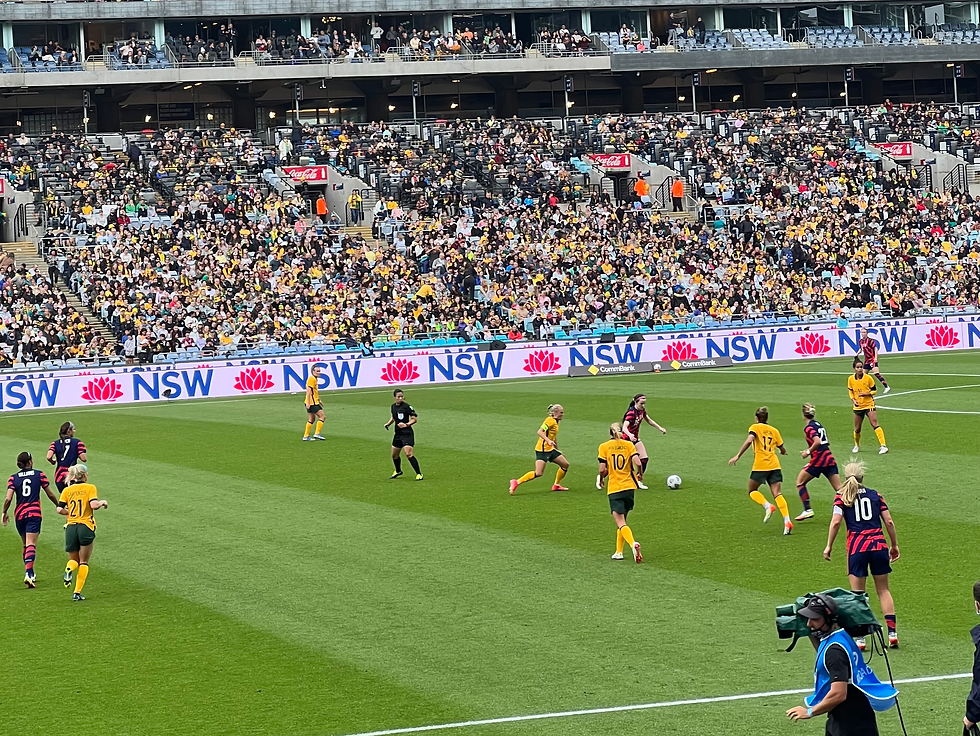Five reasons why women’s sport will catapult your brand value
- Victoria Mackinlay

- Mar 2, 2022
- 3 min read
Updated: Jul 21
Published in B&T Magazine

In anticipation of the ‘Her Sport Her Way’ Trendspotter Forum on 11th March, curated by House of Kitch for the Office of Sport, Victoria Mackinlay reflects on five reasons why women’s sport is a hot and smart investment…
The 2020s will be defined as the decade in which women’s sport blasted into the stratosphere. With compelling research showing that female sports sponsorships are delivering superlative advertiser outcomes at cost-effective rates, now is the time to get ahead of the game and capitalise on this golden opportunity. 1. It’s great value for money… In 2022, women’s teams and leagues are still commanding considerably lower sponsorship fees because they are being valued using outdated metrics. Many smart brands are unearthing incredible value from backing female athletes and teams. Toyota, Suncorp, Vegemite, and Commonwealth Bank know a good deal when they see one, and they’re all investing in women’s sport.
2. …and delivers strong ROI. For too long we’ve been obsessing over eyeballs and looking past the positive consumer sentiment that surrounds women’s sport. A True North Research report (from April 2021) shows that women’s teams have significantly higher average BenchMark EC Scores™ (emotional connection) compared to men’s teams. This translates into the sponsors of women’s teams outperforming the sponsors of men’s teams across key metrics that include: • 54% of those aware of a women’s team sponsor have a positive reaction to it, versus 41% for men’s teams’ sponsors. • 26% of those aware of the sponsor of a women’s team consider or use the sponsor, compared to 19% for men’s teams’ sponsors. “Where you invest your sponsorship dollar should be driven by your objectives,” says True North founder, Georgie Maynard. “If the aim of your partnership is to drive greater trust, consideration or usage for your brand then women’s sponsorships should be front and centre of your consideration set.”
3. Role models with Girl Power From Ash Barty capturing hearts (and eyeballs), to Taylor Harris’ kick, to Emma McKeon’s record Olympic gold medal haul – these inspiring moments are redefining how a whole generation of girls see themselves.
Marketing expert Andrew Condon, predicts that Ash Barty may soon surpass Chris Hemsworth and Hugh Jackman in terms of marketability, and the 2021 Nielsen Global Sports Marketing report shows that athlete ‘advocacy posts’ generate 63% more engagement for brands compared to other owned social media content.
Our elite female athletes are shining bright with their depth of engagement and accessibility. They’re telling epic stories of women who triumph despite adversity. Check out this authentic and articulate interview with Paralympian gold medallist Madison de Rozario on Kurt Fernley’s show ‘One on One’:
4. There are more fans in the stands (and consuming across all media channels)
Women’s sports games are filling major stadiums. Audiences in the tens of thousands are becoming common. The roaring crowds of 86,174 at the T20 World Cup Final at the Melbourne Cricket Ground broke the record for the largest crowd ever for a women’s sports event in Australia.
TV coverage of women’s sport is also growing, and TV rights are rising in value worldwide. Ash Barty just smashed peak viewership at this year’s Australian Open with over 4.61M viewers tuning into the final, and the Women’s Big Bash League has become the fourth-highest rating sports league in Australia (across men’s and women’s).
According to Ellen Purvis, Senior Account Manager at Nielsen Sports, this rapid increase in audience is bringing new consumers into the sporting fold – particularly women. “Women’s sporting properties often attract a lucrative audience for brands,” she says. “According to Nielsen Fanlinks data, avid fans of major women’s domestic sporting codes are on average 3 years younger, have a higher household income, and are 15% more likely to change their main banking or financial institution in the next 6 months, compared to avid fans of men’s sporting codes.”
5. Growth! Growth! Growth!
Major investments from governments and private organisations are increasing participation rates and the profile of women’s sporting content to a mass audience. There is significant untapped value in women’s sports as it grows across all metrics.
According to Deloitte Australia’s 2021 Technology, Media & Telecommunications (TMT) Predictions report, Women’s sports sponsorship in Australia will grow to 20% of total sponsorship value by 2025.
There’s never been a better time to realise and capitalise on the shared value opportunities that women’s sport presents with the upcoming FIBA Women’s Basketball World Cup in 2022, FIFA Women’s World Cup in 2023, and Netball World Cup in 2027.





Comments